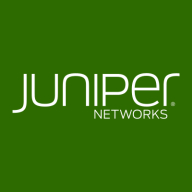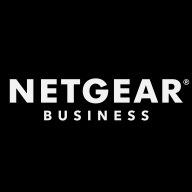

Juniper QFabric and NETGEAR Switches compete in network solutions, catering to different setups. Juniper QFabric has an edge in high-performance environments, whereas NETGEAR Switches offer cost-effective solutions for smaller businesses.
Features: Juniper QFabric offers an innovative architecture that streamlines high-speed data transfer, simplifies network management, and includes spine-leaf topology technology. NETGEAR Switches are known for their affordability and versatility, providing features like PoE and ease of setup with automatic sensing of Ethernet connectivity.
Room for Improvement: Juniper QFabric could improve its ease of use for less-experienced teams and its initial cost. NETGEAR Switches may benefit from advancements in their command-line interface and enhancing features for large networks. Both products could enhance their integration with third-party tools.
Ease of Deployment and Customer Service: NETGEAR Switches provide straightforward installation and manual support suitable for limited IT resources. Juniper QFabric installation is more complex, requiring specialized knowledge, but offers tailored customer service for intricate setups.
Pricing and ROI: NETGEAR Switches provide a balance of initial costs and ROI, ideal for budget-conscious businesses. Juniper QFabric presents a higher upfront cost but offers better ROI through enhanced speed and reduced network downtime for enterprises emphasizing performance.
| Product | Market Share (%) |
|---|---|
| NETGEAR Switches | 7.7% |
| Juniper QFabric | 4.8% |
| Other | 87.5% |


| Company Size | Count |
|---|---|
| Small Business | 4 |
| Midsize Enterprise | 1 |
| Large Enterprise | 5 |
| Company Size | Count |
|---|---|
| Small Business | 43 |
| Midsize Enterprise | 4 |
| Large Enterprise | 11 |
NETGEAR Ethernet Switches is an Ethernet solution that offers businesses of all sizes the ability to easily set up secure and highly scalable networks. Small to medium-sized companies have the option to choose from three different switching options. The three options that are most appropriate for businesses of this size are the NETGEAR Unmanaged, Plus, and Smart Switch solutions. If you're managing a large enterprise network or a campus network, then NETGEAR Fully Managed Infrastructures is the solution for you. All the NETGEAR Ethernet Switches and solutions are innovative, easy to install and use, reliable, and very cost-effective.
NETGEAR Ethernet Switches have many features that make them a most effective product. Included in these is the ability to virtually stack IP addresses in such a way that users can scale their network up with ease. These IP addresses are grouped together. Once additional data ports are connected, you have only a single switch to manage and you gain both a much higher level availability of data and a greater level of network resilience.
Benefits of NETGEAR Ethernet Switches
Some of the benefits of using NETGEAR Ethernet Switches include:
Reviews from Real Users
There are a number of characteristics that make NETGEAR Ethernet Switches extremely effective. Two major ones are its inherent flexibility and its user-friendly nature.
PeerSpot user Kevin W., a network delivery architect at a tech-services company, notes that NETGEAR Ethernet Switches gives users the ability to tailor the switches to fit their needs. He writes, "The big winner for NETGEAR is their modular switch: the 96X version. That is something that you don't see in the market anywhere else, except for Cisco who has it at a high level for a high expense. The ability to customize your own switch with their modules is a big plus for what we do in the market right now. Instead of having to piece together standardized switches, trying to make something work, or fitting the design into the mold, the modular switches are aware that you can make a mark in the industry because you purchased one switch and design with different modules added and removed later on for functionality."
PeerSpot user Chris W., a system engineer at Diversified, notes just how easy they are to use when he writes, "The ease of use of these switches is very good because of the Cisco CLI. If you are familiar with CLI, then you can configure the switch that way. It also has a relatively straightforward web interface. Using the web interface is good for beginners or people who aren't familiar with Cisco CLI. However, having a common command line interface method is great for some of our more advanced guys who are familiar with it."
We monitor all LAN Switching reviews to prevent fraudulent reviews and keep review quality high. We do not post reviews by company employees or direct competitors. We validate each review for authenticity via cross-reference with LinkedIn, and personal follow-up with the reviewer when necessary.